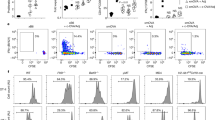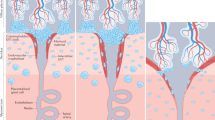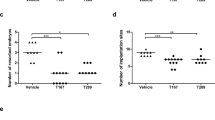Abstract
RECENT investigation of homograft tolerance has stimulated speculation about the immunological relationship between mother and fœtus during pregnancy1,2. Since the fœtus with its placenta is genetically different from the maternal host, it can be looked upon as a homograft tolerated by the mother for nine months. Fundamental to the support of such a concept is the demonstration of an immune response by the mother to her products of conception at some time during or after pregnancy. In human beings, the syncytiotrophoblasts are the fœtal cells in direct contact with the maternal bloodstream. They invade the bloodstream and disappear1. It would seem, therefore, that an immune response by the mother would most likely be directed towards tropho-blasts. Although experimental homograft immunity is mediated primarily through a cellular response by the host3, the direct contact between trophoblasts and maternal blood might stimulate a humoral response as well. The large mass of trophoblastic tissue in the placenta could absorb circulating antibody effectively. This might explain previous reports of failure to detect antibodies to placenta during pregnancy4,5. After delivery of the fœtus and placenta, the absence of this absorptive surface might allow any anti-trophoblastic antibody to remain in the bloodstream, where it could be detected by appropriate methods.
This is a preview of subscription content, access via your institution
Access options
Subscribe to this journal
Receive 51 print issues and online access
$199.00 per year
only $3.90 per issue
Buy this article
- Purchase on Springer Link
- Instant access to full article PDF
Prices may be subject to local taxes which are calculated during checkout
Similar content being viewed by others
References
Douglas, G. W., Thomas, L., Carr, M., Cullen, N. M., and Morris, R., Amer. J. Obstet. and Gynec., 78, 960 (1959).
Bardawil, W. A., and Toy, B. L., Ann. N.Y. Acad. Sci., 80, 197 (1959).
Hildeman, W. H., and Medawar, P. B., Immunology, 2, 44 (1959).
Thornes, D. R., thesis, University of Dublin (1958).
Olivelli, F., and Ruggieri, P., Minerva Gin Tor, 10, 953 (1958).
Stavitsky, A. B., J. Immunol., 72, 360, 368 (1954).
Coons, A. H., and Kaplan, M. H., J. Exp. Med., 91, 1 (1950).
Edsall, G., Ann. N.Y. Acad. Sci., 66, 32 (1956).
Author information
Authors and Affiliations
Rights and permissions
About this article
Cite this article
HULKA, J., HSU, K. & BEISER, S. Antibodies to Trophoblasts during the Post-Partum Period. Nature 191, 510–511 (1961). https://doi.org/10.1038/191510a0
Published:
Issue Date:
DOI: https://doi.org/10.1038/191510a0
This article is cited by
-
Antibodies to laminin in preeclampsia
Kidney International (1986)
-
Die Antigene der menschlichen Placenta
Klinische Wochenschrift (1975)
-
Immunchemische Untersuchungen zum Problem der ?pregnancy zone?
Archiv f�r Gyn�kologie (1969)
-
Antibodies to species homologous tissue antigens in the rat
Zeitschrift für Medizinische Mikrobiologie und Immunologie (1968)
Comments
By submitting a comment you agree to abide by our Terms and Community Guidelines. If you find something abusive or that does not comply with our terms or guidelines please flag it as inappropriate.



